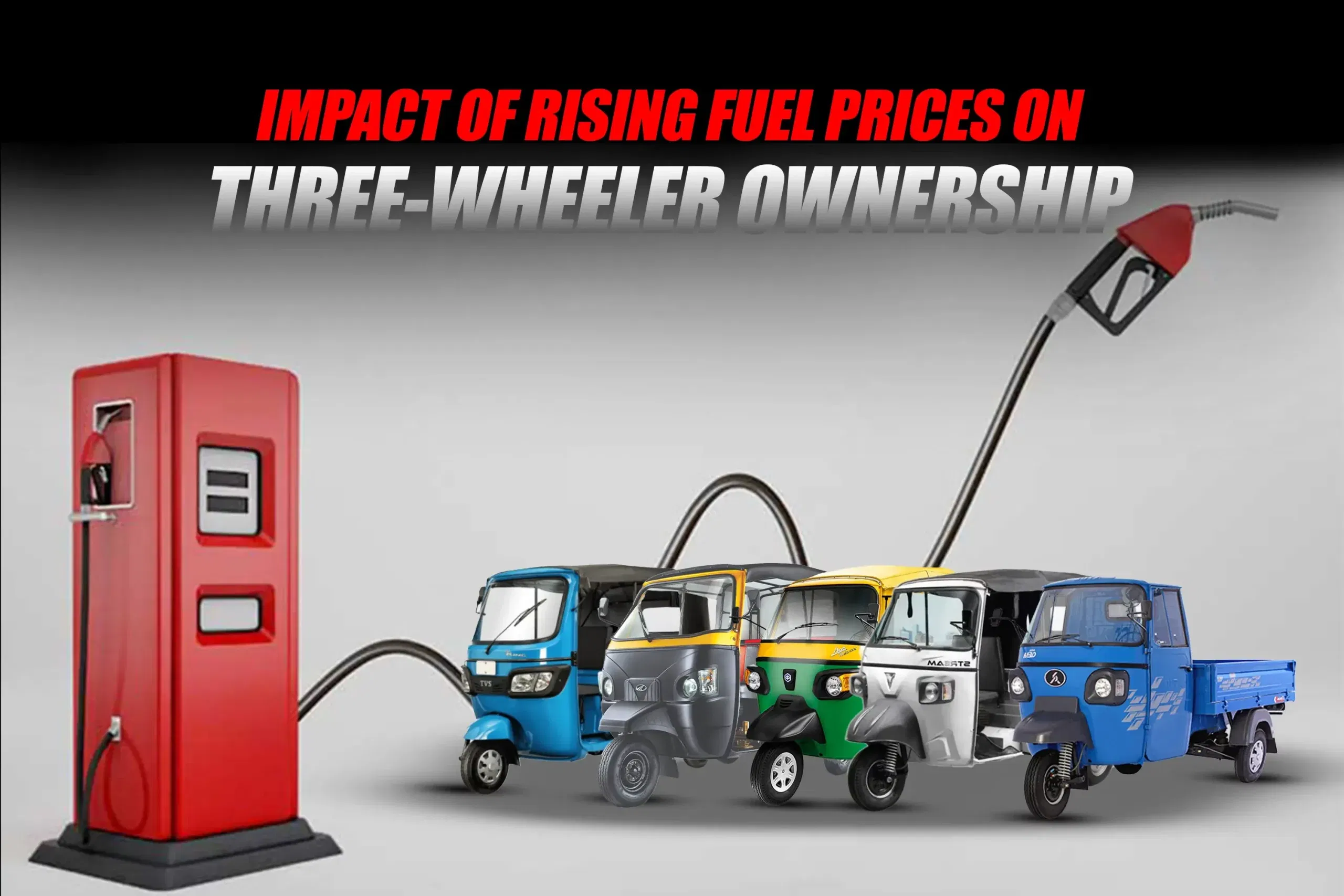Three wheelers are the backbone of India's transportation sector. They serve the commuter, small business people, and the delivery trade. Auto rickshaws ferry passengers on congested roadsides, whereas load carriers transport goods in short distances. For millions of people, these 3-wheelers are a source of daily income, but increased fuel prices impose a heavy load. The impact extends beyond gas stations. It reaches ownership, fares paid by the passengers, and the wider commercial vehicle market.
Increasing Fuel Prices and Direct Burden
Every three wheeler runs on fuel. When its price increases, the burden is direct. For drivers, fuel absorbs the bulk of their daily earnings. Research indicates 60–70% of income goes towards fuel. Even an increase of a few rupees per litre reduces profit. A private car user can cut down on travel, but not an auto rickshaw driver. His means of livelihood rely on uninterrupted trips. Increased three wheeler fuel price translates to lower income for owners and increased fares for riders.
Ownership Expenses Under Siege
Purchasing a three wheeler is more than 3-wheelers cost. Owners have to shell out money for fuel, insurance, and routine maintenance. Increased fuel prices add to this long-term burden.
- For passenger auto rickshaws, increased fuel expenses lower net profits.
- For cargo three wheelers, categorized as commercial vehicles, increased operating expenses hike delivery prices.
Therefore, the increase in fuel price makes ownership a cost burden. Buyers are hesitant to invest, although demand for transportation is still high.
Changes in Fuel Selection Among Buyers
Owners and drivers react to increased auto rickshaw fuel prices with new options. Petrol and diesel ruled the market before. Today, buyers look towards CNG and electric alternatives.
- CNG three wheelers become popular in urban areas with good gas availability. They have lower running costs, so they are popular even if they cost more to buy.
- Electric three wheelers eliminate fuel expenditure altogether. Electric three wheelers also require less maintenance. Subsidies lower their initial cost. Fleet operators enjoy long-term cost savings, so they increase adoption rapidly.
This transition demonstrates the way fuel prices transform purchasing behavior.
Effect on Passengers and Small Businesses
People experience the trickle-down effect. As fuel costs go up, operators hike fares. For the daily wage earner, students, and low-income households, increased fares eat into meager budgets. Companies experience cost increases too. Small traders, delivery partners, and neighborhood stores rely on cheap 3-wheeler transportation. If operating costs increase, they set higher costs to consumers. Subsistence items consequently become more expensive. Fuel price increases therefore do not only impact owners but society as a whole.
Policy Support and Government Initiatives
The authorities retaliate with relief measures. Subsidies for schemes like FAME-II fund electric three wheelers. CNG fuel station networks extend to cover more areas. A few state transport departments permit occasional fare increases to save drivers from losses. Nevertheless, these initiatives have limitations. Most small towns have no CNG or EV charging facilities. Drivers there are still bound by petrol or diesel with no respite from price shocks.
Path Toward Sustainability
Increasing fuel prices force the industry towards green mobility. Fleet electrification, battery swapping, and hybrid motors receive focus. Electric three wheelers are experimented with by numerous operators for last-mile delivery. The reports are encouraging, with reduced operating costs and consistent performance. For single owners, options are a function of city encouragement and buying capacity. Electric or CNG variants might look expensive initially, but long-term benefit tips the scale in their favor over conventional fuels. The transition is not smooth, but it's in one direction: away from fossil fuel dependency.
Conclusion
Increasing fuel prices reconfigures three wheeler ownership in profound ways. It reduces driver incomes, increases fares for passengers, and boosts expenses for small enterprises. But it also speeds the process of change. The market is now switching towards CNG and electric versions, supported by incentives from the government and changing buyer confidence. Three wheelers are at the heart of India's commercial vehicle ecosystem. But their fuel cycle is about to change. Increased cost gives rise to innovation, and innovation leads to resilience. The future will witness fewer diesel or petrol autos and more environmentally friendly three wheelers on Indian roads.
For more articles and news, stay updated with 91trucks. Subscribe to our YouTube channel and follow us on Facebook, Instagram, and LinkedIn for the latest videos and updates from the automotive world!
Also Read:
Web Stories
Latest Three Wheelers News
Categories
91trucks is a rapidly growing digital platform that offers the latest updates and comprehensive information about the commercial vehicle industry.
